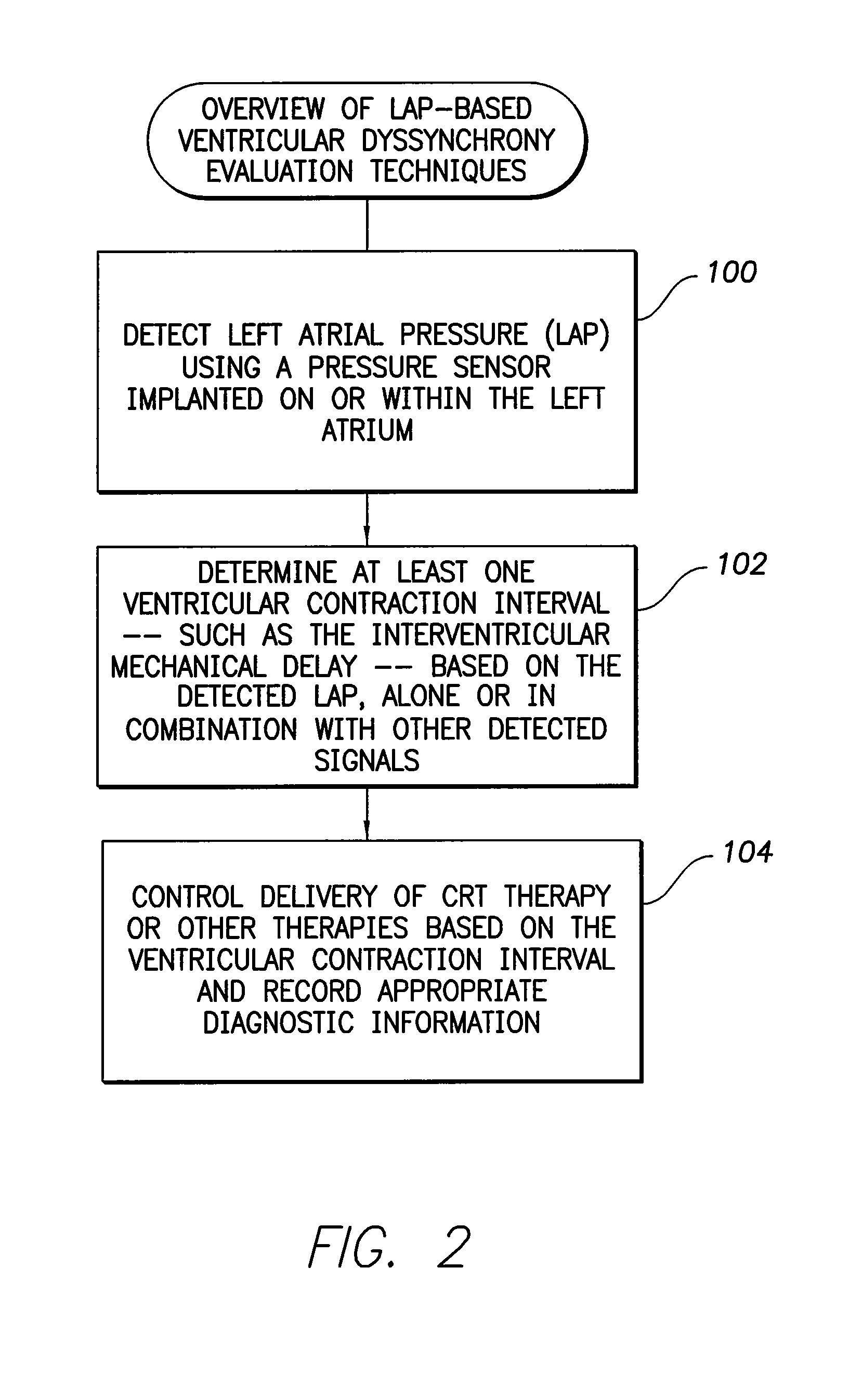Systems and methods for evaluating ventricular dyssynchrony using atrial and ventricular pressure measurements obtained by an implantable medical device
a medical device and atrial pressure technology, applied in the field of implantable medical devices, can solve the problems of insufficient ejection or filling of blood in the ventricle, depriving vital organs of oxygen and nutrients, and losing propulsive power of the heart, so as to reduce the interventricular mechanical delay, reduce the measured electromechanical delay, and detect the effect of convenien
- Summary
- Abstract
- Description
- Claims
- Application Information
AI Technical Summary
Benefits of technology
Problems solved by technology
Method used
Image
Examples
Embodiment Construction
[0041]The following description includes the best mode presently contemplated for practicing the invention. This description is not to be taken in a limiting sense but is made merely to describe general principles of the invention. The scope of the invention should be ascertained with reference to the issued claims. In the description of the invention that follows, like numerals or reference designators are used to refer to like parts or elements throughout.
Overview of Implantable Medical System
[0042]FIG. 1 illustrates an implantable medical system 8 capable of detecting parameters representative of ventricular dyssynchrony based, in part, on LAP measurements and also for controlling delivery of appropriate therapy in response thereto. To this end, a pacer / ICD 10 (or other implantable medical device) receives signals representative of LAP from an LAP sensor 12 implanted in or on the left atrium or from any other implanted device capable of detecting LAP (such as an epicardial LAP de...
PUM
 Login to View More
Login to View More Abstract
Description
Claims
Application Information
 Login to View More
Login to View More - R&D
- Intellectual Property
- Life Sciences
- Materials
- Tech Scout
- Unparalleled Data Quality
- Higher Quality Content
- 60% Fewer Hallucinations
Browse by: Latest US Patents, China's latest patents, Technical Efficacy Thesaurus, Application Domain, Technology Topic, Popular Technical Reports.
© 2025 PatSnap. All rights reserved.Legal|Privacy policy|Modern Slavery Act Transparency Statement|Sitemap|About US| Contact US: help@patsnap.com



